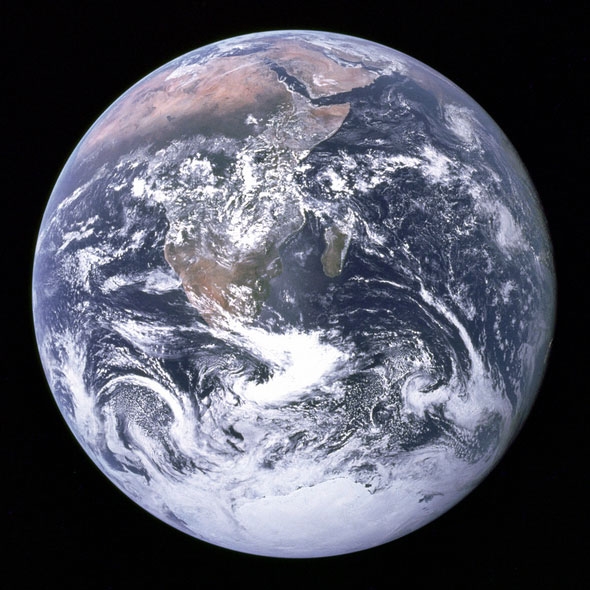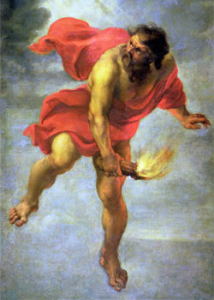In the Fall of 2003, I was in the first semester of my senior year studying Engineering at Harvey Mudd College in Claremont, California. It was a crazy busy time, finishing up coursework, doing my senior project, and applying for graduate schools. I was so eager for the semester to end that at the end of each day, I’d cross off that day on my calendar, hoping and waiting for the relief of Christmas break.
In the spring of 2004 I found out I’d been accepted to graduate school at the North Carolina State University Department of Nuclear Engineering in Raleigh. They flew me out for an interview and to finalize which professor would be my adviser. I’d never been to North Carolina before, having only lived in Arizona and California. Flying into the airport, I remember being amazed at how green and lush the landscape was.
My interview at NC State went well, and I decided I’d go there. I’d previously found the school’s automatic deferral policy online so I knew I’d be able pursue my plans to take a year off to live in monasteries but still have a guaranteed spot at NC State when I returned. I let them know I’d be deferring, to start in Fall 2005 instead of Fall 2004. For my year off, I was going to stay 3 months at St. Joseph’s Abbey in Spencer, MA and 6 months at St. Benedict’s Monastery in Snowmass, CO, near the skiing town of Aspen. I wanted to do this because I had been working so hard at school and wanted to “work” equally as hard to answer some burning religious questions I had and to delve deep into the contemplative prayer and spirituality that the Trappist monks were teaching. I knew that some of the monks at Snowmass had been involved in monastic interreligious dialog and that the famous Trappist monk from a generation earlier, Thomas Merton, also recognized the spiritual depth in the deepest forms or manifestations of other religions.
Happy that the interview went so well at NC State, I returned to the airport in Raleigh to fly back to college in California. I was puzzled when I saw a few people inside the airport who looked to me like they were Amish. I didn’t know much at all about the Amish then, but I knew they don’t use automobiles, much less airplanes! I was curious and asked a person nearby, “Who are those people? Are they Amish??” The answer I got back was that they are Mennonite. Huh! I’d never heard of that – what are Mennonites? I didn’t look into it any further.
After my 3 months at St. Joseph’s Abbey I went home for Christmas and then went off to Snowmass. I continued devouring books on religion and spirituality, and one book I came across was part of a series covering the whole panopoly of western spiritual traditions. The book was Early Anabaptist Spirituality, and it turns out that the Anabaptists are the pre-cursors or ancestors of the Mennonites and Amish. The term “Mennonite” came from the name of an early Anabaptist leader, Menno Simons.
Coming across this book felt auspicious because I wasn’t sure what sort of religious community or denomination I could belong to after the monasteries. The monasteries gave me a deep appreciation of the best of Catholicism, but I didn’t think that becoming Catholic was right for me. One of the other burning questions I’d wanted to explore in the monasteries was that of nonviolence. After reading the Russian writer Leo Tolstoy (he wrote extensively about religion and was an interfaith pioneer!), Thomas Merton, Walter Wink, Dorothy Day, and taking a harder look at the New Testament I was convinced that nonviolence is at the core of the Gospel and is a deep principle that is the best way to fight and resist evil. It turns out the Anabaptists also believe that Jesus taught an active nonviolence based on love and overcoming or transforming evil.
The history of the early Anabaptist movement was and is fascinating to me. They came about at the same time as the Protestant Reformation in the early 1500s. They were a group of people who thought the Reformation did not go far enough and was not being true to Jesus. Anabaptists read the Bible together and interpreted it as a community, not being held captive to previous interpretations or dogmas. They recognized that Jesus taught a very different and very powerful way of life, and that the New Testament was consistent in asserting that Jesus was the clearest revelation of who God is within the Bible, and that the Bible should be interpreted first and foremost through Jesus.
Much of the Reformation was literally violent against Catholicism (and vice versa), with both Catholic and Protestant groups eagerly making alliances with princes and territories to set their religion or denomination up as the law of the land. The Anabaptists, however, refused to take part in this and saw the Kingdom of God that Jesus taught and lived as being above violence, power struggles, and politics.
The word Anabaptist means “baptized again”, based on the Anabaptist practice of adult baptism. These folks saw that following Jesus took a deep understanding of not only the Bible but also politics and power – summed up in the phrase “be gentle as doves, wise as serpents.” The decision to be a disciple of Jesus, made explicit in baptism, could not therefore be made as a baby or even as a young child as the Catholics and Protestants practiced.
Tithing to the Church was also mandatory back then, and infant baptism did two things: ensured that everyone was Christian and therefore had to tithe, and also pushed forward a dangerous narrative of a unified “Christian nation”. This preempted a more genuine spirituality and understanding of Jesus, and gave church and state elites power over religion. As a result, Anabaptists were persecuted and killed by both Catholics and Protestants, clearly because of the challenge of their beliefs to Catholic and Protestant power and wealth, not merely because of a disagreement in doctrine.
Due to this persecution and the high cost of discipleship to a nonviolent Jesus, Mennonites took refuge in biblical themes of separation from the world: you are in the world but not of the world (John 17:14,16), “do not conform to the pattern of this world, but be transformed by the renewing of your mind” (Rom. 12:2); avoid being polluted by the world (James 1:27). The history is complicated, but over decades and centuries, the lived experience of being separate from society because of persecution combined with increasingly more literal understandings of these verses combined to create groups of Anabaptists – the Amish and some Mennonites – who live very simply and eschew much of technology and the typical ways of modern culture. Today, there are a range of Mennonites from those who “look” Amish but use cars and can fly in airplanes (Old Order Mennonites), to Mennonites who integrate into modern society (as the original Anabaptists did) and still value simple living as more of a spiritual value in opposition to excessive materialism. (Quite a challenge in the United States!)
Another aspect of the Anabaptists that really appealed to me was that they did not reject everything Catholicism had to offer like the rest of the Protestants did. Many of the early Anabaptist leaders were monks or friars disillusioned with the excesses, fraud, and abuse of the Church but were also well versed in and appreciative of the medieval contemplative or mystic threads of Catholic spirituality. I liked this because I came to the monasteries to learn about and practice contemplative prayer. It also made me laugh that I happened to discover the Mennonites in a monastery when many of its early leaders left monasteries to start the movement! Some might say God has a sense of humor!
Needless to say, when I left the monasteries I became a Mennonite. I’ve had many wonderful experiences as part of the Raleigh Mennonite Church and later the Manhattan Mennonite Fellowship. I’m grateful for the unique contributions of the Mennonite church and it’s one part of the (complicated) story of why I consider myself a Mennonite Christian atheist.






